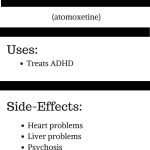
Contents
- 1 Breast Cancer Recurrence
- 1.0.1 Which breast cancer is most likely to recur?
- 1.0.2 What are the symptoms of breast cancer recurrence?
- 1.0.3 What causes recurrent breast cancer?
- 1.0.4 What are the odds of getting breast cancer twice?
- 1.0.5 How is recurrent breast cancer diagnosed?
- 1.0.6 What is the treatment for recurrent breast cancer?
- 1.0.7 Can you survive recurrent breast cancer?
- 1.0.8 How do you prevent the recurrence of breast cancer?
- 1.0.9 Subscribe to MedicineNet’s Cancer Report Newsletter
Breast Cancer Recurrence
Breast cancer recurrence occurs when cancer comes back after initial treatment and remission. Although breast cancer may recur anywhere in the body, the most common sites are the liver, bones, lungs, brain, and skin.
Systemic treatment, such as chemotherapy, hormone therapy, or targeted therapy, is necessary to reach cancer anywhere in the body.
Which breast cancer is most likely to recur?
Inflammatory breast cancer and triple-negative breast cancer are aggressive and difficult to treat, making them more likely to recur.
Treatment of recurrent breast cancer depends on previous therapies and the location of the recurrence. Local-regional recurrences, restricted to the breast or surrounding area, are usually treated with surgery and may include radiation therapy.
What are the symptoms of breast cancer recurrence?
Local recurrence
In a local recurrence, cancer reappears in the same location. Symptoms of local recurrence inside the breast include:
- New breast bulge or uneven firmness
- Nipple discharge
- Changes in breast skin
- Skin inflammation or flare
Symptoms of local recurrence on the chest wall include:
- Painless nodules on or under the skin of the chest wall
- New thickening region near the mastectomy scar
Regional recurrence
Regional recurrence occurs near the lymph nodes of the breast. It manifests as a bulge or swelling in the lymph nodes beneath the arm, around the neck, close to the collarbone, or above the collarbone.
Distant recurrence
Distant or metastatic recurrence indicates that the cancer has spread to other parts of the body, often the bones, liver, and lungs. Signs and symptoms include persistent pain in the chest or bone, trouble breathing, severe cough, intense headaches, reduced appetite, unexplained weight loss, and seizures.
IMAGES
What causes recurrent breast cancer?
Recurrent breast cancer occurs when cells from the original tumor hide in the breast or another area of the body and begin to multiply. Treatments like chemotherapy, radiation therapy, and hormone therapy aim to destroy remaining cancer cells. However, some cells may lie dormant for years and become active due to certain stimuli, spreading to other parts of the body for unknown reasons.
What are the odds of getting breast cancer twice?
Everyone with a history of breast cancer is at risk of recurrence, but the risk varies depending on several factors. Factors that increase the risk of recurrence include lymph node involvement, large tumor size, inflammatory breast cancer, incomplete tumor removal, no radiation following lumpectomy, and young age at diagnosis. The 5-year survival rate is often used to estimate prognosis. Recurrence within 5 years is more common, but if no recurrence occurs in 10 years, the risk becomes low, and life expectancy is considered normal.
However, studies show that some women develop cancer 20 years after initial diagnosis, even if they were cancer-free for the first 5 years.
How is recurrent breast cancer diagnosed?
If a doctor suspects recurrent breast cancer based on imaging or physical exam findings, further tests may be done to confirm the diagnosis:
- Imaging tests: MRI, CT, X-ray, bone scan, or positron emission tomography can be used to look for abnormal cells.
- Biopsy: Tissue extraction and analysis can determine whether the cancer is a recurrence or a new form. It can also indicate if the tumor is susceptible to certain treatments.
What is the treatment for recurrent breast cancer?
Treatment is based on previous treatments and the site of recurrence. Mastectomy may be necessary if cancer returns to the breast. Chemotherapy, hormonal treatment, or targeted therapy can be used at the location of recurrence.
Can you survive recurrent breast cancer?
Recurrent breast cancer can be treated successfully if diagnosed early. Regular screening and following your doctor’s instructions are important for prevention. Recurrent cancer cells may be more resistant and aggressive, requiring invasive surgery and often chemotherapy.
How do you prevent the recurrence of breast cancer?
Strategies to reduce the risk of recurrence include hormone therapy, chemotherapy, radiation therapy, targeted therapy, maintaining a healthy weight, regular exercise, and a nutritious diet.
Subscribe to MedicineNet’s Cancer Report Newsletter
By clicking "Submit," I agree to the MedicineNet Terms and Conditions and Privacy Policy. I also agree to receive emails from MedicineNet and understand that I may opt out of subscriptions at any time.
By clicking "Submit," I agree to the MedicineNet Terms and Conditions and Privacy Policy. I also agree to receive emails from MedicineNet and understand that I may opt out of subscriptions at any time.


